




Welcome to the second issue of Heat Pumping Technologies Magazine, your comprehensive source for the latest insights and developments in heat pumping technologies. This edition delves into compelling topics highlighting the resilience, efficiency, and innovation at the core of heat pumps.
In the "Foreword" section, discover the captivating synopsis titled "Heat Pumps – Resilient and Efficient." Extract key takeaways from the renowned 14th IEA Heat Pump Conference in Chicago, expertly curated by Thomas Fleckl. Uncover forefront research shaping the future of heat pumping technologies.
The "Column" section presents an engaging discourse on "Key Measures to Make Our Skies Blue Again." Xu Ce and co-authors offers thought-provoking perspectives on air source heat pump applications in rural Beijing. Gain insights into the vital role heat pumps play in sustainable development and environmental stewardship.
Stay informed through the "Heat Pumping Technologies News" section. Explore highlights such as the Peter Ritter von Rittinger International Heat Pump Award 2023 and winners of the IIR Scientific Awards 2023, including notable IEA HPT TCP figures. Delve into the IEA's Tracking Clean Energy Progress (TCEP) report 2023, shedding light on critical energy technologies for global transitions. Explore discourse from the International Conference in Stockholm, charting decarbonization in the European heating sector. Witness the impactful $250 million investment in US electric heat pump manufacturing.
The "Report from 14th IEA Heat Pump Conference in Chicago 2023" section relives conference highlights. Engage with the opening, annex workshops' summary, pioneering Purdue University research, and comprehensive presentation reports.
Traverse these pages to explore, learn, and engage in the dynamic world of heat pumping technologies. Celebrate advancements that redefine efficiency, driving a sustainable, resilient future.
Enjoy your reading!
The central communication activity of the Technology Collaboration Programme on Heat Pumping Technologies (HPT TCP)
Foreword: "Heat Pumps – Resilient and Efficient": Takeaways from the 14th IEA Heat Pump Conference in Chicago
Column: Key Measures to Make Our Skies Blue Again: Promotion and Application of Air Source Heat Pumps in Rural Areas of Beijing, China Heat Pumping Technologies News
Report from 14th IEA Heat Pump Conference
Opening of the 14th IEA Heat Pump Conference in Chicago
Summary Report from Annexes Workshops
Purdue University Researcher Wins Best Poster Award for Innovative High-Temperature Heat Pump Cycle at the 14th IEA Heat Pump Conference Report from Selected Technical Sessions
Place and dates for the 15th IEA Heat Pump Conference presented during the Closing Ceremony of the 14th IEA Heat Pump Conference in Chicago
Copyright:
Disclaimer
• makes any warranty or representation
•
•
Editor in chief: Monica Axell
Editor: Metkel Yebiyo
Technical editors: Metkel Yebiyo, Caroline Haglund Stignor
Project management: Lotten Wiklund
Layout: Haus
Front page reference: Photo Carlos Jones, ORNL, (photomontage)
The title "Heat Pumps – Resilient and Efficient" of the 14th IEA Heat Pump Conference, held in Chicago in May, aptly captures the growing demands placed on heat pump technology from various stakeholders, both present and future. These demands revolve around the need for reliable technology that ensures renewable and efficient heating and cooling while minimizing environmental impact.
The conference's plenary speakers emphasized the crucial role of heat pumps in global decarbonization efforts across diverse applications. They also highlighted the increasing attention heat pumps are receiving in policy discussions and the transformation of global energy systems. Throughout the conference, numerous sessions showcased the ongoing progress in heat pump technology, with a particular focus on innovations such as the utilization of higher temperatures in industrial applications, adoption in multi-family houses, transitioning to natural refrigerants, and enabling flexible operation within electrical grids powered by fluctuating renewable sources.
These topics are actively explored in various Annex projects within the IEA Technology Collaboration Programme on Heat Pumping Technologies (HPT TCP by IEA). The high level of interest and engagement observed in the numerous Annex workshops during the conference further validated the significance of their work. Chicago was definitely worth the trip!
Moving forward, "Resilient and Efficient" should remain the central message when communicating the relevance and benefits of heat pumps. Despite their global success and increasing adoption rates, resistance persists from fossil fuel proponents who promote e-fuels and green gases as viable alternatives for heating applications. Unfortunately, this often involves disregarding scientific facts and perpetuating myths. At this crucial juncture, the HPT TCP by IEA plays a pivotal role in providing clear facts and disseminating them through various channels. Thus, international platforms for exchange and collaboration among researchers, industry experts, and policymakers, such as the IEA Heat Pump Conference, will continue to serve as vital arenas for communication, knowledge sharing, and innovation transfer. In three years' time, we eagerly anticipate the 15th IEA Heat Pump Conference in Vienna, Austria, in May 2026. This internationally relevant event will offer an opportunity to stay informed and updated on the latest developments, trends, and innovations in the field of heat pump technologies. We look forward to seeing you in Vienna!
Thomas Fleckl Chair of the International Organization Committee of the 14th IEA Heat Pump Conference and Head of Competence Unit "Sustainable Thermal Energy Systems" at AIT – Austrian Institute of Technology GmbH thomas.fleckl@ait.ac.at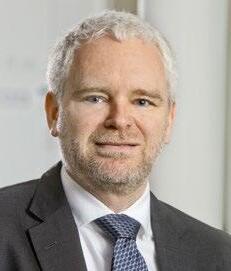
To restore the clear blue skies and enhance the air quality of Beijing, the city has taken decisive action in line with the requirements of The State Council and the Ministry of Environmental Protection. In accordance with the directives of the municipal Party committee and the municipal government, Beijing initiated the "Coal Reduction and Coal Replacement, Clean Air" campaign in rural areas in 2013. After years of continuous efforts, the city has made significant progress towards its goal of eliminating coal usage in plain areas.
By the end of 2022, approximately 1.33 million households in Beijing had transitioned to clean heating, with around 860,000 households shifting from coal to electricity. Among these coal-to-electricity conversions, heat pump technology played a prominent role, accounting for 90.8% of the cases. The most widely adopted heat pump technology was air source heat pump water packages, specifically low ambient temperature packages (nominal condition -12 °C, outlet temperature 41 °C), which were utilized by approximately 763,000 households. This constituted 88.7% of the total number of households transitioning from coal to electricity. The advancement of air source heat pump technology has been remarkable, with the Integrated Part Load Value (IPLV) rising from 2.4 to 3.2 and the low-temperature capability extending from -20 °C to -30 °C.
The successful promotion of clean heating has had a significant positive impact on the atmospheric environment of Beijing. Since the monitoring of PM2.5 concentration began in 2013, the average annual PM2.5 concentration in Beijing has consistently decreased, dropping from 90 μg/m3 in 2013 to 30 μg/m3 in 2022. In 2022, the average annual concentrations of PM10, NO2, and SO2 were 54 μg/m3, 23 μg/m3 , and 3 μg/m3, respectively, reflecting an overall improvement in air quality across all pollutants.

Looking ahead, the focus will be on advancing research related to energy-saving and carbon-reduction operations of air source heat pump packages in alignment with China's "dual carbon" goal. Through long-term monitoring of the actual operation of air source heat pump heating projects, comprehensive insights into the system's performance changes will be gained. This information will serve as the basis for in-depth data analysis, theoretical modeling, and experimental verification. Factors such as climate conditions, heat pump unit performance, compatibility with building heat loads, heating system configurations, user behavior, and operational control strategies will be thoroughly examined to enhance the performance of air source heat pump heating systems. The ultimate objective is to significantly improve the technical and economic aspects of air source heat pump heating, ensuring long-term and energy-efficient operation in rural areas of Beijing.
Author: Xu Ce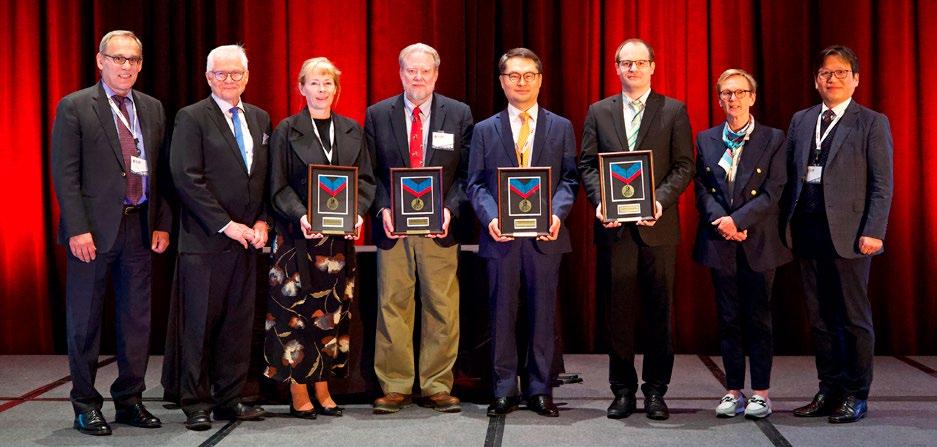
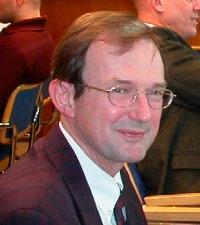
In a ceremony held at the banquet at the 14th IEA Heat Pump Conference in Chicago, USA, Per Fahlén, Chalmers University of Technology, Jeffrey D. Spitler Oklahoma State University, Rainer Jakobs Informationszentrum Wärmepumpen und Kältetechnik and Min Soo Kim, Seoul National University were given the prestigious Peter Ritter von Rittinger International Heat Pump Award, the highest international award in the air conditioning, heat pump and refrigeration field.
The award highlights outstanding contributions to the advancement of international collaboration in research, policy and market development and applications for energy-efficient heat pumping technologies that result in environmental benefits. It is awarded every three years in conjunction with the International IEA Heat Pump Conference. Mr Stephan Renz, Chair of the Executive Committee of Technology the Collaboration Programme of Heat Pumping Technologies (HPT TCP) by IEA, presented the awardees:
It is my great pleasure to recognize these dignified nominees and honour them with the most prestigious prize in the field of heat pumping technologies, said Mr Stephan Renz during the ceremony. Our award winners are undoubtedly some of the most influential individuals in the history of IEA HPT TCP.
Laudation speeches were held for all the awardees by members of the Rittinger Award Selection Committee – by Jussi Hirvonen for Per Fahlén, by Minsung Kim for Jeffrey D. Spitler, by Sophie Hosatte for Rainer Jakobs and by Stephan Renz for Min Soo Kim. Unfortunately two of the awardees could not attend physically in Chicago. Instead they attended online and substitutes went on stage to receive the award certificates.
Prof. Emirit. Per Fahlén, Chalmers University of Technology has been a very important contributor to the development of heat pumps and their introduction to the Swedish market, one of first heat pump markets to take off in Europe. He has always been keen to include industrial partners and has had more than 40 companies sponsoring projects on national and international levels. He designed and built state-of-the-art laboratories for HVAC (Heating, ventilation, and air conditioning) teaching and research and was the first test lab to be accredited for heat pump testing in Europe. Per Fahlén has published 40 reviewed journal or conference papers, 110 books or reports and miscellaneous articles. He has been a member of national and international standardization for measurement technology, heat exchangers, heat pumps etc., a member of IVA (Royal Academy of Engineering Sciences) and a member of ASHRAE, IIR, refrigeration technology associations, energy and environmental technology associations.
Prof. Jeffrey D. Spitler is Regents Professor and OG&E Energy Technology Chair in the School of Mechanical and Aerospace Engineering at Oklahoma State University. His primary contributions are in the area of ground source heat pump systems. His publications are in the top 1% in his field for citation rates. He has published over 130 technical publications on groundsource heat pump systems, including 57 journal papers, 70 conference papers and magazine articles, three book chapters and three journal editorials. He has developed a widely used design software (GLHEPRO) for ground heat exchangers and equipment and analysis methodology for in situ measurement of ground thermal properties using thermal response tests (TRT). He has developed simulation models and design methods. He currently serves as an ex officio member of the IGSHPA (International Ground Source Heat Pump Association) board of directors in an advisory role.

Dr Rainer Jakobs of Informationszentrum Wärmepumpen und Kältetechnik has made outstanding contributions to the advancement in research, applications, standardization and dissemination of heat pumping technologies since the beginning of the 1980s. He has worked for different companies on managing levels in the field of heat pumps, refrigeration, and white goods. Since 2004 he has been managing director of the IZW e.V. (Informationszentrum Wärmepumpen und Kältetechnik- Information Centre Heat Pumps and Refrigeration). Dr Jakobs is also active at the national and international level in DKV (German Society of Refrigeration and Air Conditioning), IEA Technology Collaboration Programme on Heat Pumping Technologies) and Chillventa (International trade fair on refrigeration, air conditioning, ventilation and heat pump technology in Nuremberg, Germany).
Professor Min Soo Kim completed his PhD in the Department of Mechanical Engineering at Seoul National University in 1991 and joined the faculty in 1994. He has extensively researched various thermal engineering and HVAC (Heating, Ventilation, and Air Conditioning) technologies throughout his career. His investigations have focused on heat pumps, refrigeration systems, and other HVAC-related research areas. Notably, he has been involved in over 120 projects in collaboration with major companies such as LG Electronics, Samsung Electronics, and Hyundai Motors, exploring topics such as heat pump systems, thermal management of electric vehicles, and fuel cell research. His extensive research contributions have resulted in the publication of 248 international journal papers and 480 conference papers, as well as the acquisition of 48 national and 8 international patents. Professor Kim has also played a significant role in organizing numerous international conferences. Notably, he served as the Conference NOC Chair of the 13th IEA Heat Pump Conference and successfully transformed the conference into a hybrid event, combining online and offline components, in response to the challenges posed by the COVID-19 pandemic.


The Rittinger Award is named after Peter Ritter von Rittinger, the Austrian engineer who designed and installed the first known heat pump in 1855. The award celebrates the technical skills and entrepreneurial spirit of Rittinger that is shared by the award winners.

In May The International Institute of Refrigeration (IIR) announced the winners of its prestigious Scientific Awards for 2023. The awards recognize outstanding contributions to the field of refrigeration and are presented every four years at the IIR International Congress of Refrigeration. This year, the congress was held in Paris, France, in August.
The IIR received a record-breaking 37 applications from 15 countries for all of its awards. Among the winners are Yunho Hwang and Björn Palm, who are operating agents (project leaders) for Annexe 54 “Heat Pump Systems with Low Global Warming Potential (GWP) refrigerants”, and the newly started Annex 64 “Safety measures for flammable refrigerants” within Technology Collaboration Programme on Heat Pumping Technology Collaboration (HPT TCP) by IEA.

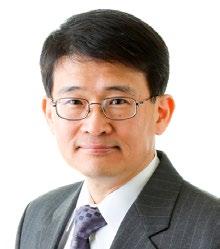
Other winners include researchers from around the world who have made significant contributions to the field of refrigeration. The winners were selected by a panel of experts from the IIR and the scientific community.

The IIR Scientific Awards are highly regarded in the refrigeration industry and are a testament to the hard work and dedication of the winners. The awards recognize the importance of research and innovation in the field of refrigeration and encourage further advancements in the industry.
The winners of the IIR Scientific Awards 2023 are:
• Laura Fedele for the Women in Refrigeration Award
• Yunho Hwang for the Gustav Lorentzen Medal
• Björn Palm for the Medal for Science and Technology


• Piotr Domanski and Philippe Lebrun for the Medal of Merit.

Source:
https://iifiir.org/en/news/discover-the-winners-of-theiir-scientific-awards-2023
https://refindustry.com/news/news-events/winners-ofthe-iir-scientific-awards-2023/

The IIR Scientific Awards 2023 recognize the important work being done in the field of refrigeration and encourage further research and innovation. The winners are a testament to the dedication and hard work of researchers worldwide working to make the industry more sustainable and efficient.
The International Energy Agency (IEA)'s Tracking Clean Energy Progress (TCEP) 2023 was published on July 7th, 2023. This annual update of the IEA’s Tracking Clean Energy Progress online resource brings forth some remarkable gains achieved over the past year.
One of the notable highlights is the record-breaking sales of electric cars, surpassing 10 million in 2022 alone. This represents an astonishing tenfold increase in just five years, showcasing the accelerated adoption of clean transportation worldwide. Additionally, renewable electricity capacity witnessed its largest-ever deployment, with 340 gigawatts (GW) added globally. As a result, renewables now contribute to 30% of the global electricity generation, a significant milestone.
The report also highlights the remarkable progress made in the buildings sector, which has transitioned from "not on track" to "more efforts needed" in the Tracking Clean Energy Progress rating system. Governments worldwide are taking decisive actions by implementing stringent building energy codes and performance standards. Furthermore, the widespread adoption of energy-efficient technologies, including heat pumps and low-emissions cooling equipment, is rapidly gaining momentum.
According to the report, in 2022 a record growth in heat pump sales was registered in Europe and in the United States, and 2023 is also showing early signs of ongoing growth. However, according to IEA heat pumps still meet only around 10% of the global heating need in buildings.
To get on track with IEA’s Net Zero Emissions by 2050 (NZE) Scenario, the global heat pump stock would need to almost triple by 2030, which means that manufacturing capacity will need to quadruple by 2030 to reach the NZE Scenario targets.
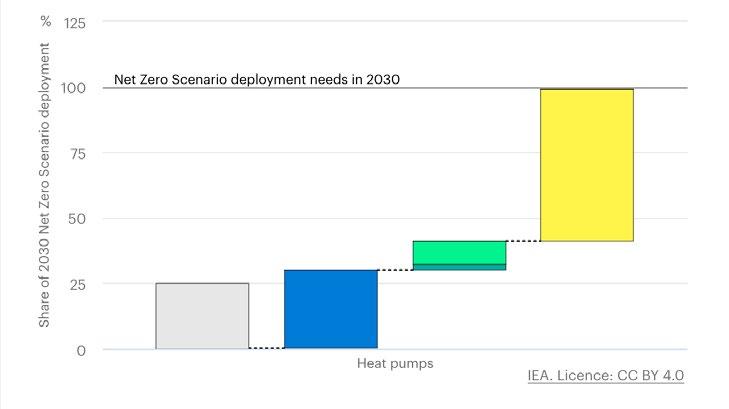
Another positive development is the strengthening of energy efficiency policies on a global scale. Countries such as India have enacted new policies that cover appliances, vehicles, industrial facilities, and commercial buildings, emphasizing the importance of energy conservation.
The HPT TCP - Technology Collaboration Programme on Heat Pumping Technologies by IEA, actively working towards advancing heat pump technologies, has played a pivotal role in driving these positive changes. Their impactful efforts have contributed to the findings presented in this publication.
Overall, the release of the IEA's Tracking Clean Energy Progress 2023 demonstrates the tremendous progress made in clean energy transitions and underlines the growing confidence and investment in renewable and energy-efficient solutions worldwide. Let's celebrate these achievements and continue our collective efforts to accelerate the global transition towards a sustainable and clean energy future.
Source:
https://www.iea.org/reports/tracking-clean-energyprogress-2023
Source: IEA (2023), Tracking Clean Energy Progress 2023, IEA, Paris https://www.iea.org/reports/tracking-clean-energy-progress-2023


In the face of Europe's ongoing energy crisis and the urgent need for decarbonization, the "Decarbonization of the European Heating Sector" conference took place on March 26th at the renowned National Museum of Science and Technology. The event was organized in conjunction to the Swedish Presidency of the European Council and brought together leading scientists, policymakers, and industry representatives across Europe to discuss strategies for transitioning to a carbon-free future. Swedish Minister for Energy and Enterprise, Ebba Busch, opened the conference, emphasizing the importance of collaborative efforts to overcome energy supply challenges and rising prices.
The conference was organized by NIBE AB, RISE Research Institutes of Sweden, Royal Institute of Technology, Swedish National Museum of Science and Technology and Heat Pump Centre – HPT TCP by IEA, to foster a constructive dialogue between stakeholders. Prominent decision-makers, researchers, and industry experts convened to address the pressing issues surrounding energy policy development in the European heating sector. All the presentations were recorded and can be found on www.heatpumpingtechnologies.org/news/1/58542
A key focus of the conference was the exploration of heat pumps as a viable solution. Sweden, renowned as a leading country in sustainable energy solutions, showcased its advancements in this field. Experts shared their experiences and knowledge of transitioning from fossil fuels to heat pumps, discussing the potential for applying these solutions in other European markets. By harnessing the power of heat pumps, participants sought to identify practical ways to accelerate decarbonization efforts.
The European heating sector plays a crucial role in our journey towards a carbon-free future, Minister Busch remarked during her opening speech. This conference serves as a platform for exchanging ideas, best practices, and innovative technologies that will drive our collective progress.
The conference facilitated fruitful discussions on topics such as energy efficiency, renewable energy sources, policy frameworks, and market incentives. Attendees engaged in panel sessions and presentations that fostered a deeper understanding of the challenges and opportunities associated with decarbonizing the heating sector.
As Europe grapples with an energy crisis, this conference provided a valuable forum for collaboration and knowledge exchange. By pooling expertise from various sectors, participants aimed to develop holistic strategies that prioritize sustainability while ensuring reliable and affordable energy for European citizens.
The "Decarbonization of the European Heating Sector" conference concluded with a renewed commitment to forging partnerships and implementing innovative solutions. The insights gained from this event will undoubtedly guide policymakers, businesses, and researchers in addressing Europe's energy challenges and accelerating the transition to a decarbonized future.
The Biden-Harris Administration recently announced an investment of $250 million to accelerate the manufacturing of electric heat pumps across America. This investment is a part of the Administration's broader efforts to address climate change and transition to a clean energy economy.
This announcement marks the first funding opportunity under the new DOE authorization invoked by President Biden, which allows the use of the Defense Production Act (DPA) to increase domestic production of five clean energy technologies, (1) solar; (2) transformers and electric grid components; (3) heat pumps; (4) insulation; and (5) electrolyzers, fuel cells, and platinum group metals. The funding, which is provided by the Inflation Reduction Act, will be utilized to promote the development of a clean energy economy, generate well-paying jobs in the manufacturing sector, and assist families in reducing their energy expenses. This investment is just one of many initiatives the Administration has launched to address climate change and promote clean energy. As discussed in the Heat Pumping Technologies Magazine, the US Inflation Reduction Act includes roughly $370 billion in spending, represents the largest investment the U.S. government has ever made to fight climate change. This investment is significant because it has the potential to transform clean energy industries in the United States, creating new jobs, reducing greenhouse gas emissions, and promoting a more sustainable future.
Heat pumps are an efficient and cost-effective way to heat and cool buildings, as they move heat from one place to another rather than generating it from scratch. Electric heat pumps, in particular, have the added benefit of reducing greenhouse gas emissions and improving air quality, as they do not rely on fossil fuels.
According to a statement from the White House, the investment will also help the U.S. meet its climate goals by reducing greenhouse gas emissions and promoting energy efficiency. The Administration has set a goal of achieving a carbon pollution-free power sector by 2035 and net-zero emissions across the economy by 2050.

Overall, the investment in electric heat pump manufacturing is a promising step towards a more sustainable future. By promoting energy efficiency and reducing reliance on fossil fuels, electric heat pumps can help the U.S. transition to a cleaner, more resilient energy system. With continued investment and innovation, this technology has the potential to play a key role in mitigating climate change and creating a more prosperous and sustainable future for all Americans.
Sources:
https://content.govdelivery.com/accounts/USDOEMESC/bulletins/35577ce
https://www.whitehouse.gov/briefing-room/ statements-releases/2022/06/06/fact-sheet-presidentbiden-takes-bold-executive-action-to-spur-domesticclean-energy-manufacturing/ https://www.energy.gov/lpo/inflation-reductionact-2022

On May 16, the 14th IEA Heat Pump Conference was opened! 400 participants from 25 different countries joined the conference. Thomas Fleckl the Chair of the International Organizing Committee; Brian Fricke – the Chair of the National Organizing Committee and Ramachandran Narayanamurthy – Deputy Director of the Building Technologies Office at the US Department of Energy, introduced the plenary opening session and welcomed all the conference attendees.
Then followed, a policy session with three high-level presentations. The first one was delivered by Fatih Birol, Executive Director of the International Energy Agency (IEA). He said that through the 40 years, the Heat Pump Conference has been organized, heat pumps have rarely gotten as much attention from policy as today. Governments pay their interest in the technology for its many benefits – comfort, energy efficiency, climate change mitigation, cost savings, and for some countries, also energy security. A new clean energy economy is emerging faster than one may think. For example, heat pump markets are growing double-digit in many countries. Dr Birol revealed that some years ago, the heat pump industry was complaining that they did not have enough budget. Now they are complaining they are having a hard time handling all incoming orders.
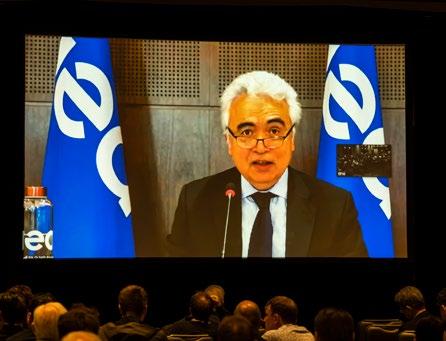
Heat pumps are becoming the key heating technology for many policy makers. IEA is very happy to see the double-digit growth worldwide but recognizes that the potential is much higher. Fatih Birol finalized his speech by thanking the Technology Collaboration Programme on Heat Pumping Technologies (HPT TCP), which for more than 40 years has brought together academia, industry, market, and policy – “even in those days when heat pumps were not a star in the energy movie…” – for their stubborn and consistent efforts to make the heat pumps today an important part of the clean energy transition.
The second presenter during the plenary opening session was Jennifer Granholm, the US Secretary of Energy. She pointed out that heat pumps are an important tool
for decarbonization but also for equity, for health and indoor air quality, and last but not least, for energy security, “which the European friends know better than everyone…”
The Europeans have been building up the heat pump market for years and advanced the technology, even proving the effectiveness of the technology in the coldest climates. Now, consumers in the United States are following, and there is a clear trend of American consumers choosing heat pumps over furnaces. Ms Granholm ensured that this trend is about to take off since the US now offers extensive support levers to households switching to heat pumps, especially to low-income families. The resources in the bills that the Biden administration has launched offer an excellent opportunity for the heat pump industry. This will result in increased performance and reduced costs, and heat pumps are getting easier to deploy. Ms Granholm said she believed that innovation anywhere leads to progress everywhere and that their experiences from the involvement with the IEA Technology Collaboration Programmes are that we innovate faster when we work together. She pointed out two critical areas for research and innovation in the US. The first one being refrigerants. When the US finally ratifies the Kigali agreement, they are committed to cutting back on refrigerants with high GWP. The second area is cold climate heat pumps. The US Department of Energy has launched a competition to innovate new solutions. Ms Granholm finalized her speech by thanking everyone who had come to Chicago to exchange knowledge of this important technology.
Mechthild Wörsdörfer, the Deputy Director-General DG Energy at the European Commission, gave the third and final policy speech. Mechthild Wörsdörfer talked about the European policies for heat pumps and how they deliver on several of the energy-related targets. She started by reminding the audience about the energy crisis that hit Europe last year and the role of heat pumps in REPowerEU, the joint energy policy action in response to Russia’s invasion of Ukraine. Heat pumping technology is one of the most important tools for ending gas dependence, first and foremost from Russia. However, heat pumps are important for energy security, the climate, economic growth, and new jobs. She stated that the heat pump needs to become the new boiler in Europe. We already have European countries, like Sweden, where heat pumps are the most common heating system for single-family buildings. We need regulatory action, investment support, skilled workers, more research and innovation, and communication to achieve this. Therefore, it is an excellent example of bringing together all the experts in an international conference to communicate progress. Mechthild Wörsdörfer finalized her presentation by informing about the Heat Pump Action Plan, in line with the energy policies and the newly launched Net Zero Industry Act, which is being developed and hopefully launched before the end of the year.
Thereafter, Stephan Renz, the Chairman of the Technology Collaboration Programme on Heat Pumping Technologies, gave a brief presentation about the program and its newly launched strategic work plan
After the policy session followed the technical part of the plenary opening. This included three presentations. One was by Min Soo Kim, President of the General Conference of IIR and Professor at Seoul National University, who talked about the heat pump-related activities of the International Institute of Refrigeration (IIR). The second speech was given by Professor Reinhard Radermacher from the University of Maryland, who talked about the future the heat pump components, such as compressors and heat exchangers. The final presentation was made by David Porter, Vice President, Electrification & Sustainable Energy Strategy, Electric Power Research Institute (EPRI), who elaborated on the future impact of accelerated deployment of heat pumps on the electric grid in the US. Presentations from the plenary opening session can be found here
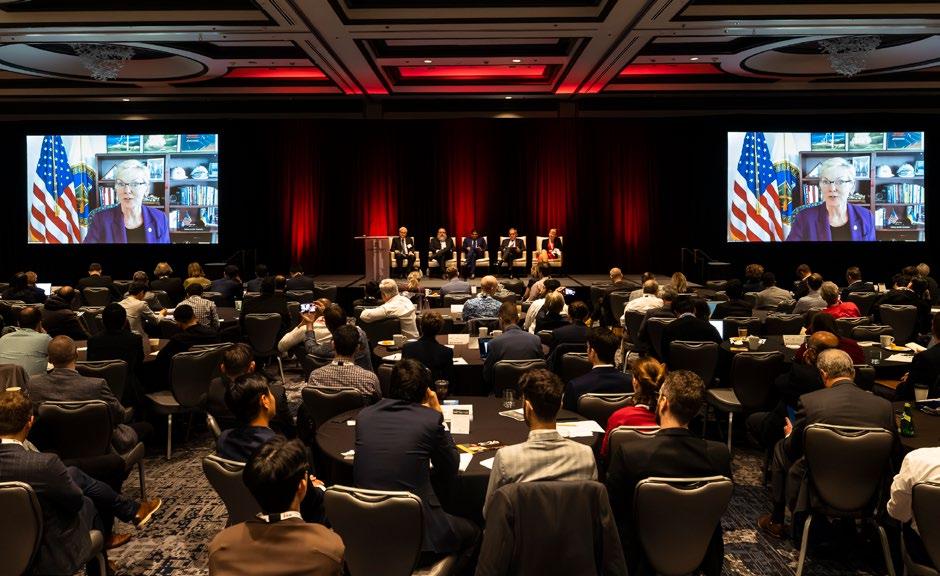
Before the opening of the 14th IEA Heat Pump Conference in Chicago, nine different workshops were organized by the operating agents of the different international collaboration projects (Annexes) and by Heat Pump Centre. This section provides a concise yet comprehensive summary of all the workshops.
Organizer: Reinhard Radermacher, USA, Operating Agent of HPT Annex 53
The workshop on Advanced Cooling and Refrigeration Technology Development, organized by Reinhard Radermacher, focused on the longer-term research, development, and demonstration needs in the field of cooling systems. HPT Annex 53, initiated in 2018, aimed to coordinate and share research on advanced cooling technologies. The technologies under investigation included vapor compression-based systems and non-traditional cooling approaches.
During the workshop, participants presented their ongoing research projects, which included concepts such as combined absorption/vapor compression/thermal storage, large chillers using water as a refrigerant, pressure exchange for work recovery, and improved matching of source and sink streams using zeotropic refrigerants. The workshop concluded with a discussion on the additional advances required or desirable for the future and the steps needed to facilitate the market introduction of these new concepts.
Organizer: Benjamin Zühlsdorf, Danish Technological Institute, Operating Agent of HPT Annex 58
The workshop on Decarbonizing Process Heating with High-Temperature Heat Pumps, organized by Benjamin Zühlsdorf, aimed to explore the potential of high-temperature heat pumps in decarbonizing industrial process heating. The workshop highlighted the importance of collaboration among various stakeholders, including technology suppliers, end-users, policy makers, and research organizations, to exploit the massive potential of high-temperature heat pumps.
The keynote session provided an overview of the application potential of high-temperature heat pumps in industries and discussed the current technology status and perspectives. The group session delved into the potentials, challenges, and required actions for different stakeholders, including technology suppliers, endusers, policy makers, and research organizations. The workshop concluded with a summary of the results from the group session and a plenary discussion.
Organizers: Carsten Wemhöner, OST, Switzerland, Operating Agent of HPT Annex 61, along with representatives from EBC Annex 83 and SHC Task 66
The workshop on Heat Pumps in Positive Energy Districts, organized by Carsten Wemhöner, aimed to enhance collaboration and promote heat pump integration in positive energy districts for urban energy transition. The workshop brought together three IEA projects: HPT Annex 61, EBC Annex 83, and SHC Task 66, focusing on high-performance buildings and positive energy district concepts.
The workshop introduced the work of the three projects, discussing technical and economic opportunities and challenges associated with heat pump integration on the building and district levels. The workshop included presentations of research projects, a panel discussion involving the audience, and a summary, perspectives, and a Q&A session.
Organizer: Svend Pedersen, Danish Technological Institute, Operating Agent of HPT Annex 57, and Marion Bakker, RVO, ExCo delegate of the Netherlands
The workshop on Flexibility in Energy Grids Provided by Heat Pumps, organized by Svend Pedersen and Marion Bakker, focused on the possibilities of heat pumps to increase the flexibility in energy systems. The workshop highlighted the role of heat pumps in enabling the integration of different energy sources and empowering end-users to become prosumers.
The workshop consisted of presentation sessions where results from Annex 57-based cases were shared. The purpose was to provide attendees with insights into the flexibility created by heat pumps and the potential for both individual heat pumps and large-scale heat pumps. The workshop also provided an opportunity for attendees to engage in discussions and share their knowledge.
Organizer: Christoph Reichl, Austrian Institute of Technology, Operating Agent of HPT Annex 51 and HPT Annex 63
The workshop on Acoustic Signatures and Placement Impact of Heat Pumps, organized by Christoph Reichl, addressed the placement impact of heat pumps on their surroundings and the importance of minimizing noise emissions. The workshop aimed to increase awareness among heat pump owners and their neighbors regarding optimal heat pump placement.
The workshop provided an immersive experience for participants through interactive sessions using augmented reality (AR) and virtual reality (VR) equipment. Participants had the opportunity to test innovative placement tools and rate different sound samples in a psychoacoustic awareness test. The results and feedback from the workshop would contribute to the ongoing IEA HPT Annex 63, focusing on the placement impact of heat pumps.
Organizer: Kashif Nawaz, Oak Ridge National Laboratory, USA
The workshop on Comfort and Climate Box Solutions for Cooling and Dehumidification, organized by Kashif Nawaz, aimed to discuss and refine the proposal for an international collaboration project. The project aimed to develop efficient, affordable, applicable, and scalable solutions for comfort cooling and dehumidification, combining heat-pumping technologies with energy storage and integrated control.
The workshop started with an introduction to the objectives of the proposed project, followed by presentations on the importance of energy storage and the challenges and opportunities associated with process integration. The workshop provided a platform for discussion among participants.
Organizer: Yunho Hwang, University of Maryland, USA, Operating Agent of HPT Annex 54
The workshop on Progress in Heat Pumps with Low GWP Refrigerants, organized by Yunho Hwang, aimed to disseminate the latest progress in the IEA HPT Annex 54 activities. The workshop provided updates on the research and development of heat pumps using low-GWP refrigerants, including case studies, design guidelines, and real-world experiences.
The workshop included presentations on the final results of the LC150 project for R290 heat pump development, low-GWP heat pump activities in Austria, ecologic assessment of heat pump systems, and the influence of refrigerant choice and heat exchanger design on low-GWP refrigerants. The workshop aimed to share knowledge and facilitate the transition from high-GWP to low-GWP refrigerants in heat pump applications.
Concluding reflections from Annex Workshops
Overall, these workshops brought together experts, researchers, and stakeholders from various fields to share knowledge, discuss advancements, and identify future steps for the development and deployment of advanced cooling technologies, decarbonization of process heating, heat pump integration in positive energy districts, flexibility in energy grids, optimal placement of heat pumps, comfort cooling and dehumidification solutions, and progress in heat pumps with low GWP refrigerants.
The Heat Pump Centre organized an impactful workshop titled "Investors' Role in Heat Pump Value Chain," focusing on leveraging private investment to accelerate the clean energy transition. The event convened experts, industry leaders, and investors to discuss opportunities, challenges, and potential in heat pump investments.
To achieve ambitious climate goals, clean energy investment must triple by 2030. The International Energy Agency (IEA) emphasizes a tenfold increase in heat pumps by 2050 for Net Zero emissions. Private investment complements public funding, expediting the transition. The workshop began with an overview by Heat Pump Centre's Monica Axell and Caroline Haglund Stignor. IEA's Rafael Martinez Gordon stressed private investment's significance in the clean energy transition. Julian Dieler of the European Commission highlighted policy support for heat pump value chain investments.
A unique remote contribution came from Nigel Jollands, emphasizing heat pump deployment for heating decarbonization from investors's perspective. Industry leaders Patrick Crombez (Daikin) and Barbara Priesching (Vaillant) discussed bottlenecks hindering market growth and targeted investment solutions. Interactive group discussions facilitated idea exchange, enriching perspectives. A panel discussion, "Investors' Role in Heat Pump Value Chain," included Martin Forsén (Nibe), Patrick Crombez, Barbara Priesching, Rafael Martinez Gordon, and Nigel Jollands. The panel explored
investors' roles in different different parts of the heat pump value chain.
Workshop organizers Monica Axell and Caroline Haglund Stignor highlighted key takeaways: private investment's vital role, the potential for heat pump growth, and industry collaboration. The workshop united stakeholders, fostering knowledge exchange and collaborative solutions.
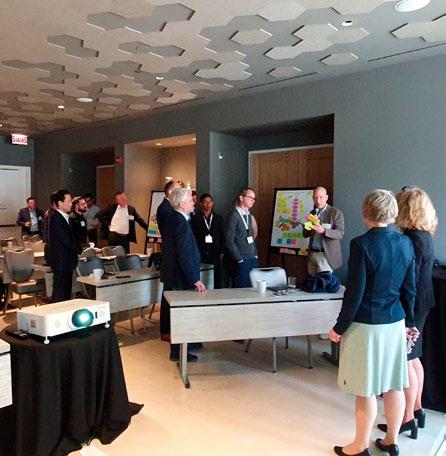
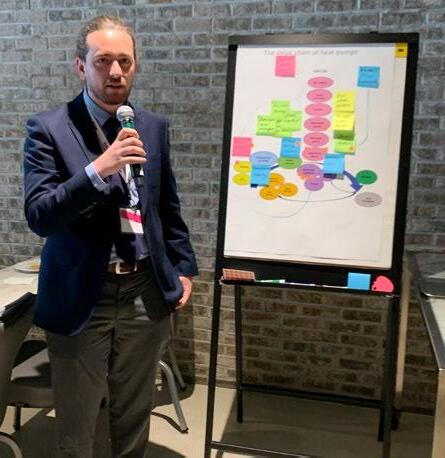
Workshops like these are crucial amid climate challenges. Discussions underscored private investors' potential in the clean energy transition and the importance of heat pump value chain investments. Investments in heat pumps can decarbonize heating and reduce emissions. The workshop promoted collaboration among industry, policymakers, and investors, informing future strategies.
Key takeaway: Overcoming bottlenecks requires targeted investments in research, innovation, and supportive infrastructure. Policymakers' role is vital in creating a conducive investment environment. The panel showcased diverse investor roles across stages, emphasizing innovation and cost-effective solutions. In conclusion, the workshop catalyzed collaboration and dialogue, advancing the clean energy transition. Private investment's impact is pivotal, aligning with climate goals. By uniting public and private efforts, a sustainable future with clean heating solutions is achievable. Workshops like these inspire further investment and collaboration, driving the heat pump adoption and global energy transition.
Organizer: Heat Pump Centre
The Heat Pump Centre hosted another transformative workshop titled " The Role of Public and Private Funded Projects to Tenfold the Number of Heat Pumps." Organized by Monica Axell, Caroline Stignor Haglund, and Metkel Yebiyo, the event aimed to inspire collaboration between the public sector and industry by showcasing success stories and strategies to optimize public investment in heat pump deployment. The International Energy Agency's (IEA) 2022 report, "The Future of Heat Pumps," underscored heat pumps' vital role in reducing natural gas usage, emissions, and energy costs. To align with Net Zero Emissions by 2050, 50% of building heating must come from heat pumps by 2045, necessitating a tenfold increase. Achieving this relies on significant clean energy investments and thoughtful public-private projects to overcome hurdles.
The workshop commenced with DMonica Axell and Caroline Haglund Stignor introducing the day's themes. Rafael Martinez Gordon from the IEA emphasized heat pumps' potential for global climate goals. Ramachandran Narayanamurthy (US Department of Energy) discussed the Inflation Reduction Act's role in fostering investment and scaling the heat pump sector.
Stefan Moser (European Commission, DG Energy) elaborated on the Net Zero Industry Act and Heat Pump Action Plan's impact in the European Union. Thomas Nowak (European Heat Pump Association) shared insights into the Heat Pump Accelerator's role in driving collaboration and innovation.
Ammi Amarnath (Electric Power Research Institute) discussed the role of utilities and government in US heat pump deployment. Marion Bakker and Tom van Aalten (RVO, Netherlands) shared transformative public funding experiences. Nicola Lazenby (BEIS, UK) highlighted the importance of public-funded demos in driving awareness.
Emina Pasic (Swedish Energy Agency) discussed new funding opportunities for research and innovation. The panel discussion featured Rafael Martinez Gordon, Thomas Nowak, Stefan Moser, Ramachandran Narayanamurthy, Nicola Lazenby, Patrick Crombez (Daikin), and Barbara Priesching (Vaillant), delving into publicprivate project impacts.
Axell and Haglund Stignor summarized key insights, highlighting collaboration's importance for heat pump adoption. They emphasized optimized public investments and supportive policies for market growth. The workshop fostered knowledge exchange and collaboration, aligning with the Heat Pump Centre's commitment to heat pump technology development. Attendees gained insights into navigating challenges and seizing opportunities, contributing to global climate goals.
The workshop left participants invigorated and enlightened about public-private funding's role in advancing the heat pump sector. Connections formed during this event are expected to lead to collaborative initiatives, propelling clean energy transition and realizing IEA's ambitious targets.
https://heatpumpingtechnologies.org/publications



The prestigious 14th IEA Heat Pump Conference 2023, which took place in Chicago 15-18 May, witnessed the crowning of Elias N. Pergantis from Purdue University as the recipient of the Best Poster Award. Pergantis' groundbreaking research, titled "Thermodynamic Analysis of the Cascade Economization Cycle for HighTemperature Heat Pump Applications", presented a novel solution to address the cost and coefficient of performance (COP) deterioration associated with sink-source temperature differences.
The study, which garnered significant attention at the conference, shed light on the prevailing temperature and pressure gaps found in cascade temperature and high/low sides in the existing literature. To counter these challenges, the utilization of a cascade cycle involving two distinct refrigerants emerged as the most common approach.
Pergantis’ research focused on the implementation of R-32 and R-1233zd(E) as refrigerants for the low and high sides, respectively. By incorporating an open economization process on the high side, the study demonstrated impressive performance enhancements compared to the baseline cycle. The results showed a remarkable increase of approximately 25% in COP and a 15% improvement in volumetric heating capacity (VHC).
The "Cycle Open Economization on High-Side" proposed by Pergantis proved to be the highlight of the research, showcasing its potential for revolutionizing high-temperature heat pump (HTHP) applications. The findings sug-
gested that a two-stage screw compressor equipped with economization could significantly enhance the thermal efficiencies (TEs) of HTHP systems, particularly in scenarios where a readily available high-temperature heat supply is scarce.
The poster presented by Elias N. Pergantis stood out among a plethora of exceptional research projects showcased during the 14th IEA Heat Pump Conference 2023. The results were well highlighted, clearly presented, and the poster was well-structured. With its focus on improving the cost-effectiveness and performance of high-temperature heat pumps, Pergantis’ study has the potential to make a significant impact in the field, paving the way for more efficient and sustainable energy solutions.
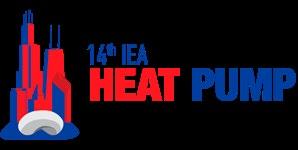
May 14 – 18, 2023
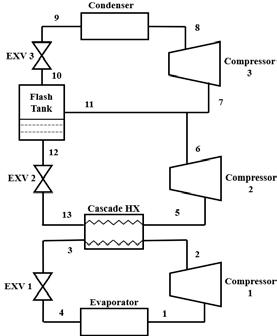
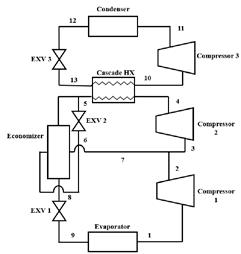
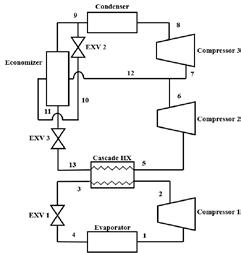

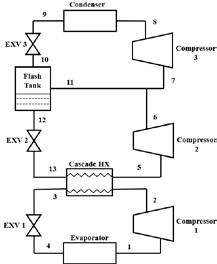
Elias N. Pergantisa, *, Abd Alrhman M. Bani Issaa, John K. Brehma, Andreas J. Hoessa, Eckhard A. Grolla, Davide Ziviania aPurdue University, Ray W. Herrick Laboratories 177 S. Russell St., West Lafayette 47907, USA


❑ Decarbonization of industrial process can result in significant emission reductions It has been estimated that 3416 PJ of heat are required in the U.S. by the process industry, with 50% for that for supply temperature between 120 to 160 ℃ and another 30% for 160 to 200.
❑ High Temperature Heat Pump can help in this effort. However, challenges include:
➢ Compressordesign and oilmanagement
➢ Refrigerant selection. R245fa is actively used despite its high GWP

➢ COP deterioration with sink-source difference.

➢ Cost Gas prices are more competitive than electrical This study is aimed to at tackling the challenges of cost and COP deterioration with sink source difference It was identified that in the scientific literature, significant temperature and pressure difference existed between cascade temperature and high/low sides Cascade with two different refrigerants is the most common cycles
Proposed modification: Introduce an economizing process on one of the two refrigerant loops
❑ Operating conditions: Sink temperature (100 – 150 °C), source temperature (-10 – 40 °C), lift temperature (60 – 110 °C).
❑ High-side: R-600, R-601, R-1336mzz(Z) R1234ze(Z) R-1233zd(E) R-1224yd(Z). Best natural = R-600 (isobutane), best HFO = R-1233zd(E) .
❑ Low-side: R-32, R-290, R-1234yf, R-404A. Bestchoiceissubjecttolocalregulations.

EES Simulation: Screw compressor, subcooling (5 °C), superheat(5 °C), Pinch(10 °C), HX effectiveness(0.7).
❑ With R-32 and R-1233zd(E) (low-high sides), the open economization on the high-side was able to offer performance enhancement in the order of 25% for COP and 15% for VHC with respect to baseline cycle.
Best: Cycle Open Economization on high-side
Economics: A two-stage screw compressor with economization can significantly improve TEs of HTHP especially for large lift applications where high temperature heat supply is not readily available
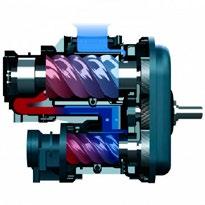
Keywords: High-temperature heat pumps, decarbonization, advancedcycles.
Acknowledgements: This work was supported by the Center for High Performance Building at Purdue and Onassis Foundation (E. Pergantis is one of the foundation’s scholars).
Contact Information
Elias N Pergantis (epergant@purdue edu)
In the vibrant atmosphere of the 14th IEA Heat Pump Conference held in Chicago, a diverse array of experts and enthusiasts gathered to engage in illuminating discussions and presentations that propelled the frontiers of heat pump technology. This section unveils a concise yet comprehensive summary of the captivating insights shared during the conference's presentation sessions. All papers from the conference can be found in the HPT TCP database: www.heatpumpingtechnologies.org/publications
In the keynote session, Takenobu Kaida et al. discussed Japan's current status and future prospects for industrial heat pumps. The technology status was presented from a Japanese perspective, including the availability of airsource and watersource heat pumps that can reach temperatures up to 175°C.
Development perspectives were explored, such as the use of refrigerants with lower global warming potential (GWP) and achieving higher supply temperatures above 120°C. Refrigerant selections were analyzed, and diagrams were used to illustrate the relationship between lift and maximum supply temperature. The session also highlighted the target of reducing greenhouse gas (GHG) emissions by 46% by 2040. However, the actual installation data showed that the current installations are 7.8 times greater than the data used for the government's target.
The industries where these heat pumps have been installed were discussed, with a total capacity of 877 MW and an installed capacity of 186 MW. A barrier analysis was conducted through a questionnaire, with a response rate of 11.5%. The results showed that 38% of respondents have installed heat pumps, and 89% of them are satisfied with their heat pumps. Interestingly, heat pumps were found to have a similar satisfaction level as steam boilers or water heaters. The survey also revealed that 48% of respondents were aware of the technology but had not yet installed it, with the main barriers being large capital investment and space restrictions. Policy options were suggested to address these barriers, including subsidies, reduced subsidy applications, targeting newly built factories, rebalancing taxes and levels, and strengthening demonstration and deployment projects.
The presentation entitled Decarbonizing Steam Generation with High-Temperature Heat Pumps: Refrigerant Selection and Flowsheet Evaluation by Christoph
Höges et al. focused on decarbonizing steam generation in industries with high heat demand. A simulation tool was developed to optimize the performance based on process parameters using different flow sheets. Various refrigerants were compared, and compressor efficiencies were evaluated. The results showed that Ammonia had the best performance, but due to the limited availability of components, hydrocarbons and HFOs were being used as refrigerants.
In addition, Tim Hamacher et al. discussed the Industrial High-Temperature Heat Pump for Steam and Hot Water Production. This presentation showcased examples of the ThermBooster heat pump system. One example demonstrated steam production for the gelatin industry, using waste heat from combined heat and power systems. Another example focused on hot water production in the waste recycling industry. The performance of the reciprocating compressor was emphasized.
The presentation given by Elias Vieren et al. session focused on the techno-economic optimization of hightemperature heat pumps using different fluids. The aim was to maximize the COP while considering financial aspects. The model considered electricity and component costs, and the levelized cost of heat (LCOH) was analyzed. The session also explored the use of new binary fluids for heat sink and heat source applications.
Kashif Nawaz et al. delivered an insightful presentation titled "Performance Analysis of High-Temperature Heat Pumps with Ejectors." The presentation delved into two types of ejectors commonly employed in high-temperature heat pumps: supersonic ejectors and two-phase ejectors. The discussion focused on the gas-dynamic properties and the impact of working fluids on system efficiency, highlighting how the system performs under various conditions.
Arne Høeg's presentation centered around the performance of a cutting-edge ultra-high temperature industrial heat pump that operates on the Stirling cycle. The simulated performance of the heat pump was showcased, and the discussion extended to pilot installations in Norway. Additionally, the ongoing research and development installation at KTH, which focuses on achieving temperatures of 250°C and 280°C on the sink side, was highlighted. Notably, the presentation mentioned the target capital cost of $300 USD per kilowatt (kW) for the next two years.
Christian Huettl et al. delivered a presentation titled "New Perspectives for the Application of Large-Scale Heat Pumps". The presentation highlighted that large heat pumps typically begin at a heating capacity of 5-7 MW, according to Siemens. Real-world testing was conducted with a pilot project in Mannheim, utilizing the Rhein River as the heat source and the district heating network with temperatures reaching up to 99°C as the heat sink. Another example showcased a district heating system in Berlin, where cooling towers were used as a partial heat source. Furthermore, examples from
paper mills, chemical plants, waste heat recovery from electrolyzer plants, and exhaust gas condensation from natural gas or hydrogen-fired boilers or gas turbines were presented. Siemens employs synthetic refrigerants for their heat pumps; however, the PFAS ban in Europe poses a challenge. Siemens is actively working on providing alternative choices for customers.
Ammi Amarnath et al. presented on "Industrial HighTemperature Heat Pumps – Ongoing Research in the USA". Their focus is on building a business based on market demand rather than relying solely on incentives. They drew a parallel with the widespread adoption of LED light bulbs, which initially received many incentives but are now considered standard. The presentation (see below) showcased a small prototype system and laboratory tests conducted with three different working fluids. Plans for commercialization include a 50 kW heating capacity prototype, and EPRI is collaborating with small companies, including boiler manufacturers, for the licensing of the prototype. The heat pump employs a newly built standard screw compressor commonly used in the industry with special adaptations.

There were four sessions at the conference focused on market and policy. The first session provided a general overview, followed by sessions that discussed the situation in North America, Europe and policies related to refrigerants and environmental impact.

The first session began with a keynote speaker, Rafael Martinez-Gordon, from the IEA Secretariat. He shared insights from the IEA Global Energy Transition Stocktake, highlighting the continuous double-digit growth of global heat pump sales. China was identified as the largest market, while Europe experienced the highest growth. In Europe, new records were set last year, and the market has doubled since 2019. In the US, heat pump sales are competing with fossil fuel-based systems. However, more efforts are needed to meet climate goals. By 2030, heat pumps will need to meet nearly 20% of global heating needs in buildings to align with national pledges. To achieve net-zero emissions by 2050, sales must increase by over 15% annually, surpassing current growth levels.
One presentation in this session was by Nate Kinsey, who discussed a policy strategy for scaling heat pump adoption. He addressed the challenges of implementing electrification programs and provided recommendations for designing sustainable support schemes. Nicola Lazenby emphasized the importance of informing policy makers, engaging with consumers, and improving the consumer journey to achieve high-density heat pump deployment.
The second session, introduced by Ed Vineyard from the US Department of Energy, focused on addressing barriers to heating electrification in the US. Cost-related barriers, both upfront and lifecycle costs, were highlighted. Installer premiums and the need for workforce development and consumer education were also discussed. Mini Malhotra presented on market potentials, challenges, opportunities, and technological advancements for heat pumps in the US. An extensive overview of heat pump-related policies, ranging from international agreements to R&D support and supply chain affordability, was provided.
The session on Europe began with Thomas Nowak from the European Heat Pump Association (EHPA) delivering a keynote presentation titled "Making Progress in the Decade of Heat Pumps". He highlighted the impressive market growth of 38% in Europe, with 15% of buildings now being heated by heat pumps. Nowak questioned if progress was fast enough and mentioned the development of a policy package and action plan to accelerate heat pump adoption across the EU. However, he stressed the importance of adopting policies to ensure private sector investments are realized.
The last session on the market was introduced by Didier Coulomb from the International Institute of Refrigeration (IIR). He discussed refrigerant-related policies and their impact on research needs in heat-pumping technologies, particularly in Europe. The revision of the F-gas regulation, including bans on certain F-gases and the pace of phase-down, was a major focus. Coulomb emphasized the need for preparedness as changes would come quickly. He highlighted the importance of research on energy efficiency, safety, and costs, with a focus on natural refrigerants as the future, as synthetic refrigerants offer limited possibilities.
Laure Meljac's presentation in this session focused on tracking the carbon impact of space heating appliances throughout their lifecycle. She emphasized the increasing importance of Life Cycle Assessment (LCA) and Environmental Product Declarations (EPD). While various ISO and EN standards exist for performing LCA, establishing a common rule for EPD is crucial to avoid future burdens on the circulation of goods. LCA of products, buildings, and services helps make informed choices to minimize environmental impact.
 by Svend Vinther Pedersen
by Svend Vinther Pedersen
In the keynote presentation, Tommy Walfridson discussed the growing need to balance the electricity grid in the EU due to increased renewable energy production. He explained how individual heat pumps could help by offering balancing services. He also mentioned the potential for external control of heat pumps through API solutions. A Swedish study demonstrated that individual heat pumps can contribute to balancing services.
Another presentation focused on monitoring a groundwater heat pump in Geneva, Switzerland. This heat pump supplies heat to a low-temperature district heating grid. The measurements showed that the heat pump met 85% of the early heat demand. The seasonal performance factor (SPF) was 3.69 for heat production and 4.28 for space heating.
The use of absorption-heat exchangers as transfer substations in district heating grids was explored in a study. These heat exchangers can subcool the primary return temperature below the secondary supply temperature, increasing heat capacity within the grid and facilitating the integration of renewable energy. Experimental investigations showed that subcooling of up to 20.7 K was achievable with an absorption-heat exchanger under certain conditions and increased mass flow in the secondary grid.
Fields of application for large-scale heat pumps in Germany were presented, including district heating supply, data centers, and a research center for hydrogen technology. These projects demonstrated the potential of heat pumps to contribute significantly to renewable energy in the heat supply. They also observed significant reductions in CO2 emissions, ranging from 50% to 90%, compared to gas boilers.
One of the presentations in Session 1.11 discussed the feasibility of using retrofitted air-conditioners with thermal energy storage (TES) in hot countries. A transient model was developed to analyze power savings and electrical loads for a 17.5-kW air-conditioning unit in Dubai. The results showed that using a phase change material (PCM) with a melting point of 22°C can significantly improve the air-conditioner's performance. It resulted in higher coefficients of performance (COP), reduced p ower consumption during peak hours (up to 50% reduction), and increased cooling capacities by 18%.
The carbon mitigation potential of heat pumps integrated with thermal storage for grid-interactive residential buildings was evaluated. The study used ice/water-based phase change material (PCM) with a heat pump (HP) and thermal energy storage (TES). Results from a one-week analysis during the cooling season showed a 12.68% reduction in cooling utility cost, a 10.19% reduction in total electric consumption, and 50.2% of peak electric load shifted to off-peak times. By using TES during peak times, 11.92% of grid emissions were reduced. The study concluded that while this configuration offers economic advantages, further control optimization is necessary to reduce peak energy consumption. The use of phase change material heat exchangers (PCM-HX) as part of latent heat thermal energy storage (LHTES) in heat pump applications was investigated. An aluminum serpentine heat exchanger with louvered fins was experimentally studied for its thermal performance as a PCM-HX.
Another presentation highlighted how thermal energy storage (TES) can be integrated into heat pump systems to improve efficiency and capacity. By adding a third temperature body, heat pumps can operate between any two bodies, effectively delivering heat to the application. This integration allows for a smaller heat pump size without compromising heat delivery. The methodology was demonstrated for a building cooling application, resulting in a reduction in the nominal heat pump size from 3 tons to 2.4 tons.
Two of the sessions during the IEA Chicago Heat Pump Conference focused on reducing the global warming impact of refrigerants, specifically R-410A, through the use of alternatives with lower global warming potential (GWP). The papers presented explored various possibilities using thermodynamic calculations, system modeling, and experimentation. The adoption of R-32 by manufacturers for heat pumps was discussed, but there was recognition of the need for even lower-GWP fluids in the future.
The presentations highlighted the use of blends of R-32 and R-1234yf with varying GWP and flammability levels, as well as the potential of R-290 (propane) and other refrigerants, particularly in split air-to-air heat pumps. Tools and models were developed to explore the design and performance of systems using unfamiliar refrigerants and to optimize system performance while reducing refrigerant charge.

The evaluation of direct and indirect global warming emissions of heat pumps for various refrigerants revealed that several fluids had GWP values lower than 150, significantly lower than R-32 (GWP = 675) and R-410A (GWP = 2,088). The US Environmental Protection Agency (EPA) identified safe alternatives to R-410A for air conditioners with low flammability. Optimized systems using refrigerants with a GWP lower than 150 were found to reduce life cycle CO2 emissions by 8.5%-28.6% while fitting into existing casings.
Studies investigated refrigerants with different GWP values, such as R-454B, DR-4, R-479a, R-454A, R-454B, and R-454C, and evaluated their performance in existing heat pump systems. Compressor speeds were adjusted to compensate for capacity penalties, resulting in comparable or superior performance to R-410A with lower GWP options. Further improvements in system design are expected to enhance overall efficiency.
The testing of refrigerant blends containing R-1132a, including R-468C, showed slightly lower capacity values in a commercially available R-410A packaged heat pump. System optimization and the use of an electronic expansion valve were suggested to improve performance. Feasibility tests with high-pressure, low-GWP refrigerants, such as R-744 and LFR3, demonstrated promising results for first-generation prototypes.
The design of heat pumps using R-290 (propane) as a refrigerant was explored, focusing on achieving maximum power within limited indoor usage. Specific heating capacity and design considerations were outlined, indicating the potential of propane for heat pump applications. Lastly, the study on new refrigerants for automotive use, particularly electric vehicles lacking waste heat from engines, examined R-474A. This blend showed increased heating and cooling capacity compared to R-1234yf and improved coefficient of performance (COP) compared to R-744.
Overall, the research presented in these papers contributes to the understanding of working fluids and refrigerants in heat pumps and automotive systems. Efforts are being made to find environmentally friendly alternatives with reduced GWP while maintaining or improving system performance.
The sessions on ground source heat pump systems provided valuable insights into the performance, optimization, and development of these systems. The presentations covered a wide range of topics, including long-term performance, utilization of abandoned mines, simulation studies, and innovative calculation methods.
and showed that flooded mines maintain a nearly constant temperature between 10-30°C throughout the year. Results from various locations demonstrated that heating and cooling can be achieved with an overall system SPF greater than 5.
Dr. Metkel Yebiyo conducted a simulation study on the optimization of a GSHP system using energy piles, heat pumps, and a dry air cooler. The study used a TRNSYS model to analyze control algorithms for optimal performance. The results indicated significant savings when the system was optimized for control and operation.
The studies highlighted the potential of ground source heat pump systems in achieving high energy efficiency, reducing greenhouse gas emissions, and optimizing control and operation. The results demonstrated the effectiveness of different ground source heat exchangers, such as horizontal and spiral ground heat exchangers, in providing efficient heating and cooling. The use of thermal response tests and simulation tools played a crucial role in assessing the performance and feasibility of these systems. In addition, the sessions on components and system development focused on advancements in steamdriven ejector heat pumps, metal-foam-enhanced tube bundles, membrane heat exchangers, and the use of CO2 as a heat distribution fluid. These innovations aimed to improve heat transfer, energy efficiency, and overall system performance.
One session focused on heat pump systems that utilize different types of ground sources. It began with a keynote presentation by Dr. Signhild Gehlin, the operating agent of IEA HPT Annex 52, discussing the long-term performance of larger ground source heat pump systems. The presentation highlighted the results from system boundary 1, which focused on the heat pump unit. The measured performance values for heating, cooling, and combined heating and cooling were in line with literature results, ranging from 3.5 to 3.9 SPF1.
Lukas Oppelt shared results from using abandoned mines as a heat source for heating and cooling. The study included examples from a silver mine in Freiberg, Germany,
Ändra til: In another session Professor Katsunori Nagano and his GSHP research group from Japan presented new developments on horizontal and spiral ground heat exchangers. They also introduced a thermal response test (TRT) method for measuring the thermal conductivity of deep U-tube borehole heat exchangers. The TRT method utilized an oscillating heat source and was validated for different patterns of horizontal ground heat exchangers.
Sara Bordignon discussed a study that utilized manufacturers' data for water-to-water heat pumps in North American and European markets. The study developed simplified GSHP models for predicting heat extraction based on a limited number of heat pump operating points. The recommended models showed acceptable accuracy, with no more than 3% RMSE compared to catalogue data.

In a session about Components and System Development, Jeremy. Spitzberger presented an experimental study on a steam-driven ejector heat pump for water heating applications. The study focused on heating applications, and higher high-temperature evaporator temperatures resulted in higher condensing temperatures at the expense of ejector heat pump COP.
Cheng-Min Yang conducted a study on pool boiling on metal-foam-enhanced tube bundles for flooded evaporator configurations. The study visualized the flow and characterized the heat transfer using transparent test setups. The results showed that all three metal-foamenhanced tube bundles outperformed bare tubes, with the compressed metal-foam-enhanced tube bundles showing better results than the uncompressed ones.
In four sessions on this theme a wide range of presentations delved into diverse topics, highlighting innovative applications and performance improvements. Here are some of the key presentations that caught attendees' attention:
Thermally driven industrial ionic liquid absorption heat pump dryer: This presentation by Michael Schmid et al. focused on a novel thermally driven industrial ionic liquid absorption heat pumpdryer. The study explored the dynamic behavior and steady-state measurements of an absorption heat tran former operating in an industrial environment, offering insights into its operational efficiency.

Ionic liquid absorption system for dehumidification and IAQ enhancement: Rohit Bhagwat et al. presented an ionic liquid absorption system designed to enhance dehumidification and indoor air quality in built environments. The study showcased the potential of this technology in improving comfort and energy efficiency.
Performance of a state-of-the-art packaged heat pump for residential space conditioning and hot water: Navin Kumar et al. shared insights into the performance of a state-of-the-art packaged heat pump designed for residential space conditioning and hot water. The study demonstrated the efficiency and reliability of the system in meeting the heating and cooling demands of residential buildings.
Boiling heat transfer of ammonia in a flooded evaporator of adsorption heat pumps: Jin Sub Kim et al. presented research on the boiling heat transfer of ammonia in a flooded evaporator of adsorption heat pumps. The study investigated the heat transfer characteristics of ammonia and its implications for improving the efficiency of adsorption heat pumps.
Study on a hybrid refrigeration cycle combining an absorption process with a compression process: Tsutomu Wakabayashi et al. discussed a study on a hybrid refrigeration cycle that combined an absorption process with a compression process using a low-GWP refrigerant. The presentation highlighted the potential for achieving improved energy efficiency and reduced environmental impact through such hybrid cycles.
These presentations, along with others from the conference, showcased the latest advancements in heat pump technology, including thermally driven systems, ionic liquid absorption, hybrid cycles, and high-efficiency applications. The insights gained from these studies contribute to the ongoing efforts to develop more sustainable and energy-efficient heating and cooling solutions for various applications.
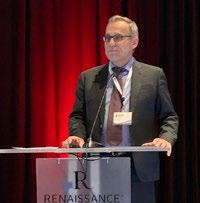
The 14th International Energy Agency (IEA) Heat Pump Conference, held in Chicago under the theme "Heat Pumps – Resilient and Efficient," concluded on a high note with a resounding call for accelerated action in combating climate change and securing energy supply. The conference, which spanned five days and brought together about 400 attendees from 25 countries, served as a crucial platform for discussing the latest advancements in heat pumping technologies and fostering collaboration among policymakers, innovators, investors, academia, and researchers.
Heat pumps, identified by the IEA as the key heating solution to help meet climate targets, took center stage at the conference. Participants engaged in insightful workshops attended a wide range of presentations by researchers from around the world, and actively participated in poster sessions, fostering the exchange of valuable knowledge on market trends, policies, and standards related to heat pump technologies.
The conference has underscored the importance of swift and decisive action as the world grapples with the escalating climate crisis. With the 14th IEA Heat Pump Conference setting the stage for collaboration, innovation, and knowledge exchange, stakeholders are now better equipped to implement sustainable solutions and bridge the gap between ambitious targets and effective action.
As the conference drew to a close, the Chairman of the Technology Collaboration Programme on Heat Pumping Technologies (HPT TCP)
Stephan Renz took the stage once again, this time to formally conclude the event. He announced the location of the next conference in 2026. The 15th IEA Heat Pump Conference will be held in Vienna, Austria, further highlighting Europe's commitment to advancing sustainable heating and cooling solutions. The conference will take place in Hofburg Vienna, historical building in the center of Vienna, 26–29 May, 2026. The Chair of the next National Organizing Committee (NOC) will be Thomas Fleckl, who served as the Chair of the International Organizing Committee (IOC) for this Conference.

Please check for updates for any conference that you plan to attend. Venues and dates may change.
September 11 – 13
13th International Conference on Compressors and their Systems
London, United Kingdom
https://citycompressorsconference. london/
October 10 – 12
SIFA 2023 – Interprofessional Refrigeration and its Applications Trade Show
Paris, France
https://www.expo-sifa.com/
October 12 – 14
REFCOLD India 2023
Chennai, India
https://refcold.in/
October 24 – 25
European Heat Pump Summit 2023
Exhibition Center, Nuremberg, Germany
https://www.nuernbergmesse.de/en/ events/european-heat-pump-summit-2023
October 26
HPT TCP National Experts Meeting 2023
The Heat Pump Center (HPT TCP by IEA) Nuremberg, Germany
https://heatpumpingtechnologies.org/ news/1/58931/
November 16 – 17
JRAIA Symposium 2023
International Symposium on New Refrigerants and Environmental Technology 2023
International Conference Center Kobe (Hybrid event)
https://www.jraia.or.jp/jraiasymposium/en/index.php
November 29 — 30
International Conference on Industrial Heat Pumps
Prague, Czech Republic
https://www.exergie.cz/
2024
April 8 – 10
China Refrigeration Expo 2024
Beijing, China
https://en.cr-expo.com/?gclid=EAIaIQobChMIttyL0Ja4_gIV4gUGAB0lCwp2EAAYASAAEgI7YPD_BwE
April 21 – 24
11th Asian Conference on Refrigeration and Air Conditioning (ACRA)
Jeju (Korea)
http://www.acra2024.org/
May 29 – 31
14th IIR Conference on PhaseChange Materials and Slurries for Refrigeration and Air Conditioning
Paris (France)
June 9 – 11
8th IIR Conference on Sustainability and the Cold Chain
Tokyo, Japan
July 15 – 18
27th International Compressor Engineering Conference at Purdue West Lafayette, IN, United States
https://engineering.purdue.edu/Herrick/about/news/Conferences
August 11 – 14
16th IIRGustav Lorentzen Conference on Naturals Refrigerants University of Maryland, United States
August 21 – 24
10th IIR Conference on Caloric Cooling and Applications of Caloric Materials
Baotou, China
August 27 – 30
China Heat Pump Conference 2024 Shenzhen, China
September 9 – 11
11th IIR Conference on Compressors and Refrigerants Bratislava, Slovak (Republic)
October 8 – 10
Chillventa 2024 – Refrigeration, AC & Ventilation, Heat Pumps Exhibition Nuremberg, Germany
2025
January 01 – 30
7th IIR Conference on Thermophysical Properties and Transfer Processes of Refrigerants College Park, United States
AUSTRIA
Dr. Thomas Fleckl
Austrian Institute of Technology
Tel: +43 50550-6616 thomas.fleckl@ait.ac.at
BELGIUM
Mr. Wim Boydens
Boydens Engineering
Tel. +32 477 31 95 42 wimb@boydens.be
CANADA
Dr. Sophie Hosatte Ducassy
CanmetENERGY
Natural Resources Canada
Tel: +1 450 652 5331 sophie.hosatte-ducassy@canada.ca
CHINA
Prof. Xu Wei
China Academy of Building Research
Tel: +86 10 84270105 xuwei19@126.com
CZECH REPUBLIC
Mr. Tomáš Caha
Exergie.CZ
Tel: +420 725 505 055 tc@exergie.cz
DENMARK
Mr. Svend Pedersen
Danish Technological Institute
Tel: +45 72 20 12 71 svp@teknologisk.dk
FINLAND
Mr. Jussi Hirvonen
Finnish Heat Pump Association
Tel: +35 8 50 500 2751 jussi.hirvonen@sulpu.fi
International Energy Agency
The International Energy Agency (IEA) was established in 1974 within the framework of the Organization for Economic Co-operation and Development (OECD) to implement an International Energy Programme. A basic aim of the IEA is to foster co-operation among its participating countries, to increase energy security through energy conservation, development of alternative energy sources, new energy technology and research and development.
Technology Collaboration Programme on Heat Pumping Technologies (HPT TCP)
International collaboration for energy efficient heating, refrigeration, and air-conditioning.
Disclaimer:
FRANCE
Mr. Paul Kaaijk
ADEME
Tel: +33 4 93 95 79 14 paul.kaaijk@ademe.fr
GERMANY
Dr. Rainer Jakobs Informationszentrum
Wärmepumpen und Kältetechnik
Tel. + 49 6163 57 17 jakobs@izw-online.de
ITALY
Dr. Maurizio Pieve
ENEA, Energy Technologies Dept.
Tel: +39 050 621 36 14 maurizio.pieve@enea.it
JAPAN
Mr Naohiko Goto Energy Conservation Technology Dept.
Tel: +81445205281 gotonoh@nedo.go.jp
Mr. Takahiro Asahi
Heat Pump and Thermal Storage Technology Center of Japan (HPTCJ)
Tel: +81 3 5643 2404 asahi.takahiro@hptcj.or.jp
NETHERLANDS
Ms. Marion Bakker
Netherlands Enterprise Agency (RVO)
Tel: +31 88 042 2677 marion.bakker@rvo.nl
NORWAY
Mr. Rolf Iver Mytting Hagemoen NOVAP
Tel. +47 971 29 250 river@novap.no
SOUTH KOREA
Mr. Hyun-choon Cho
KETEP
Tel: +82 2 3469 8301 energykorea@ketep.re.kr
SPAIN
Mr. Guillermo Zaragoza Head of Solar Thermal Application Research Unit (CIEMAT-PSA)
Tel: +34 950387941 guillermo.zaragoza@psa.es
SWEDEN
Ms. Emina Pasic
Swedish Energy Agency
Tel: +46 16 544 2189 emina.pasic@energimyndigheten.se
SWITZERLAND
Mr. Stephan Renz
Beratung Renz Consulting
Tel: +41 61 271 76 36 renz@renzconsulting.ch
UNITED KINGDOM
Mr. Oliver Sutton
Department for Business, Energy & Industrial Strategy
Tel: +44 300 068 6825 oliver.sutton@decc.gsi.gov.uk
UNITED STATES
Dr. Brian Fricke
Building Equipment Research
Building Technologies Research & Integration Center
Tel: +1 865 576 0822, frickeba@ornl.gov
Ms. Melissa Voss Lapsa – Coordinator
Building Envelope & Urban Systems Research
Building Technologies Research & Integration Center
Tel: +1 865 576 8620, lapsamv@ornl.gov
Vision
Heat pumping technologies are the cornerstone for a secure, affordable, high-efficiency, clean and net-zero emission energy system for heating, cooling and refrigeration. We are the key worldwide independent actor to achieve this vision across multiple applications and contexts.
We generate and communicate information, expertise and knowledge related to heat pumping technologies as well as enhance international collaboration.
Mission
To accelerate the transformation to an efficient, renewable, clean and secure energy sector in our member countries and beyond by performing collabora-
tive research, demonstration and data collection and enabling innovations and deployment within the area of heat pumping technologies.
Heat Pump Centre
A central role within the HPT TCP is played by the Heat Pump Centre (HPC).
The HPC contributes to the general aim of the HPT TCP, through information exchange and promotion. In the member countries, activities are coordinated by National Teams. For further information on HPC products and activities, or for general enquiries on heat pumps and the HPT TCP, contact your National Team at www.heatpumpingtechnologies.org/ contact-us/
The Heat Pump Centre is operated by RISE Research Institutes
Sweden. Heat Pump Centre c/o RISE Research Institutes of Sweden P.O. Box 857 SE-501 15 Borås Sweden
Tel: +46 10 516 53 42 hpc@heatpumpcentre.org
www.heatpumpingtechnologies.org
ofThe HPT TCP is part of a network of autonomous collaborative partnerships focused on a wide range of energy technologies known as Technology Collaboration Programmes or TCPs. The TCPs are organised under the auspices of the International Energy Agency (IEA), but the TCPs are functionally and legally autonomous. Views, findings and publications of the HPT TCP do not necessarily represent the views or policies of the IEA Secretariat or its individual member countries.